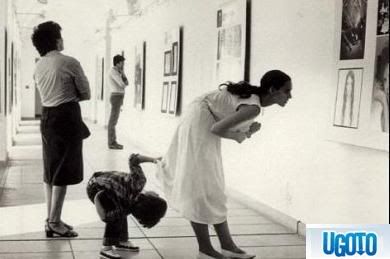 I love forward-thinking exhibitions that stand out among the ordinary and mundane of the international museum world. Sure, everyone is excited to see yet another Impressionists' Masterpiece show with Monet's Waterlilies and/or a Picasso Retrospective, but there is so much more in the art world besides those Blockbusters. More often than not, it is the contemporary art museums and galleries that take this risk to plunge forward and truly create art that one can experience with more than one of their five senses.
I love forward-thinking exhibitions that stand out among the ordinary and mundane of the international museum world. Sure, everyone is excited to see yet another Impressionists' Masterpiece show with Monet's Waterlilies and/or a Picasso Retrospective, but there is so much more in the art world besides those Blockbusters. More often than not, it is the contemporary art museums and galleries that take this risk to plunge forward and truly create art that one can experience with more than one of their five senses. So far, the best example of this risk can be found from now until 15 April 2007 at the Tate Modern (London). German artist Carsten Höller has installed 6 metal slides of various sizes and speeds in the main galleries of the Tate Modern. This form of experimental art is available for people of all ages and backgrounds, and is described by the French writer Roger Caillois as a ''voluptuous panic upon an otherwise lucid mind''. This is artwork one can experience, and it is the experience that truly matters. This might cause one to ask, "What interests Höller to create such an experience, both public visually and the inner spectacle experienced by those on the side?" Anxiety and desire are common feelings, but what else?
So far, the best example of this risk can be found from now until 15 April 2007 at the Tate Modern (London). German artist Carsten Höller has installed 6 metal slides of various sizes and speeds in the main galleries of the Tate Modern. This form of experimental art is available for people of all ages and backgrounds, and is described by the French writer Roger Caillois as a ''voluptuous panic upon an otherwise lucid mind''. This is artwork one can experience, and it is the experience that truly matters. This might cause one to ask, "What interests Höller to create such an experience, both public visually and the inner spectacle experienced by those on the side?" Anxiety and desire are common feelings, but what else?
The question to ask here is simply this (in the opinion of Holler): Would a daily dose of sliding really stimulate our attitude and/or outlook on life? Could sliding be some sort of therapy to bring confidence to those who are fearful of taking risks? Can a daily dose of sliding do a lot of good for our ordinary/mundane lives?
I would like to encourage discussion on this matter. Public art one can experience has been around since at least the 1970s... but could they, like fountains and public squares in Italy, be a method of bringing people together and adding a little piazzaz to their everyday lives?
:)



